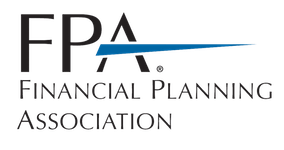In an era where career fluidity is becoming the norm, the decision to switch jobs is no longer as straightforward as it once was. Baby boomers born between 1957-1964 averaged 12.7 career changes during their working years according to a recent study from the Bureau of Labor Statistics. While the allure of a higher salary often steers this decision, the savvy job seeker knows the critical role employee benefits play in this equation. From equity compensation to health insurance, and retirement plans, these benefits can significantly impact your financial and personal wellbeing.
Understanding Equity Compensation and Vesting Schedules
Equity compensation can be a powerful component of a job offer, particularly in startups and tech companies. This form of compensation represents ownership in the company and can include stock options, restricted stock units (RSUs), and other equity types. Its value ties directly to the company’s performance, potentially offering long-term financial rewards. You can read our recent blog on this topic here.
However, the key to equity compensation lies in understanding vesting schedules. These schedules dictate when you can access the equity. Typically, a vesting schedule will occur over a period of 3 to 5 years, but occasionally the vesting schedule is cliff vesting, meaning the shares go from 0 to 100% vested on a specified day. Therefore, it’s crucial to weigh the potential long-term benefits against your career plans. For instance, if you’re considering a job switch within a year, that lucrative equity package might not be as beneficial as it seems if the shares will not have vested yet. You might instead decide to stick around until those shares vest, and then begin your new job search.
Always compare the equity offerings of your current and potential employers – not just the quantity of the equity but also the type, the vesting schedule, and the potential growth of the company.
For those new to the concept or seeking a deeper understanding of equity compensation, including its various forms and implications for your financial planning, Investopedia provides a comprehensive overview. Check out their detailed article on Equity Compensation to explore how this form of non-cash pay can benefit employees, especially in startups or tech companies where it’s commonly used to supplement salaries.
Navigating Health Insurance Transitions
When changing jobs, health insurance is a critical factor to consider. The transition period between jobs can leave you temporarily uninsured, which is a financial risk. Understanding your options is key. If your new job has a waiting period for health benefits, consider selecting coverage under COBRA (Consolidated Omnibus Budget Reconciliation Act), which allows employees to continue their existing employer-sponsored health insurance—but without the employer subsidy—for a limited time after leaving a job.
Comparing health insurance plans isn’t just about premiums. Look into deductibles, out-of-pocket maximums, copays, and the network of doctors and hospitals. A lower premium plan might end up costing more if it has a high deductible. Also, consider your and your family’s healthcare needs—are there specific medications or treatments that you need covered?
For those with ongoing health issues or planning major life events the continuity of care is crucial. In such cases, check to see if your new employer’s health plan covers your current doctors or specialists. This can prevent disruptions in your healthcare and avoid the hassle of finding new providers.
For those considering leaving their employer to venture into self-employment, navigating health insurance transitions takes on a different angle. Without access to employer-sponsored plans, options like Affordable Care Act (ACA) plans through Healthcare.gov become particularly relevant. These plans are designed to offer comprehensive coverage, including essential health benefits such as outpatient care, emergency services, and prescription drugs. Premiums can vary based on income, and you may qualify for subsidies to make coverage more affordable.
Another avenue worth exploring is health-sharing plans, such as Medi-Share or Christian Healthcare Ministries. These are not traditional insurance but rather a cost-sharing arrangement among members with similar values, often resulting in lower monthly costs. However, it’s important to understand the differences; these plans may have limitations on coverage compared to traditional insurance, including restrictions on pre-existing conditions or specific types of medical care. When transitioning to self-employment, thoroughly research and compare these options to find the best fit for your healthcare needs and financial situation. This decision is significant, as the right health insurance plan can provide peace of mind and stability on your new entrepreneurial journey.
Evaluating Retirement Savings Options During a Job Transition
Your retirement savings plan should be a cornerstone in any job change decision. If you’re transitioning between jobs, you face crucial decisions regarding your 401(k) or similar retirement plans. Leaving your savings with your former employer might be advantageous, particularly if the plan offers a robust investment lineup and low fees, ensuring your nest egg continues to grow efficiently.
However, consolidating your retirement savings by rolling over your 401(k) into your new employer’s plan could simplify your financial management. It’s important to fully understand the vesting schedule for your matching contributions, as they often vest over several years, impacting your long-term planning.
Alternatively, considering an Individual Retirement Account (IRA) rollover offers a broader array of investment options and potentially lower investment fees. The choice between staying with an employer’s plan or rolling over to an IRA hinges on several factors, including investment choices, fee structures, and the services you are seeking by the financial institution.
After-Tax Contributions and Deferred Compensation Plans
For those with the ability to save beyond the normal employee contribution limits ($23,000 for those under 50 in 2024), after-tax contributions to a 401(k) plan present a compelling option. These contributions can later be converted to a Roth 401(k) or Roth IRA, allowing for tax-free growth and withdrawals in retirement. For example, a $10,000 after-tax contribution that grows to $30,000 can offer significant tax savings, with the $20,000 growth being tax-free under proper management. The tax savings in this situation depends on your current and expected future tax rates, as well as the projected growth of your investments.
Deferred compensation plans offer another strategic approach, particularly for high earners seeking to reduce their taxable income. The deferred amount grows tax-deferred until withdrawal, at which point it’s taxed as ordinary income. The benefit here is twofold: reducing current taxable income, and potentially taking distributions in the future at a lower tax bracket. For instance, deferring $15,000 annually at a 32% tax bracket saves $4,800 in taxes each year. Over time, this can amount to a substantial tax saving, especially when compounded with investment growth.
Making informed decisions about these retirement savings options requires a nuanced understanding of the tax advantages and potential implications for your financial future. Planning tools and consultations with financial advisors can be invaluable in modeling these tax implications and making decisions that align with your overall financial strategy and retirement goals. As the saying goes, it’s not about what you make, it’s about what you keep, and having access to some of these tax tools through your employer presents quantifiable value.
For more insights on leveraging investment accounts as effective tax tools in your retirement planning, explore our detailed guide here. This resource offers further strategies to optimize your investment approach, potentially enhancing your tax efficiency and contributing to a more secure financial future.
Other Benefits to Consider
In addition to the big three—equity, health insurance, and retirement—there are other benefits to consider. These can include:
Paid Time Off (PTO): Understand the PTO policy of your potential new employer. More PTO can significantly impact your work-life balance and job satisfaction. Alternatively, it might be acceptable to walk into significantly less PTO than you currently have, but you at least want to know in advance.
Professional Development: Opportunities for growth and learning are vital. Does the new job offer tuition reimbursement, attendance at conferences, or in-house training?
Work-Life Balance and Impact: Consider flexible working arrangements, such as the ability to work remotely or have flexible hours. This is often the driver for a career change. Does your new role allow your impact to be recognized? Are you able to interact with end users to seek feedback to create an ideal product? These considerations help to improve your job satisfaction.
In conclusion, a job change is more than a leap into a new professional adventure; it’s a complex decision with multiple facets to consider. By taking a deep dive into the intricacies of equity compensation, health insurance options, and retirement plans, you equip yourself with the knowledge to make a decision that aligns with your long-term personal and financial goals. Remember, it’s not just about the immediate benefits, it’s about where you see yourself in the future. As you navigate this transition, don’t hesitate to seek professional advice, and make informed choices that pave the way for a successful career path.









